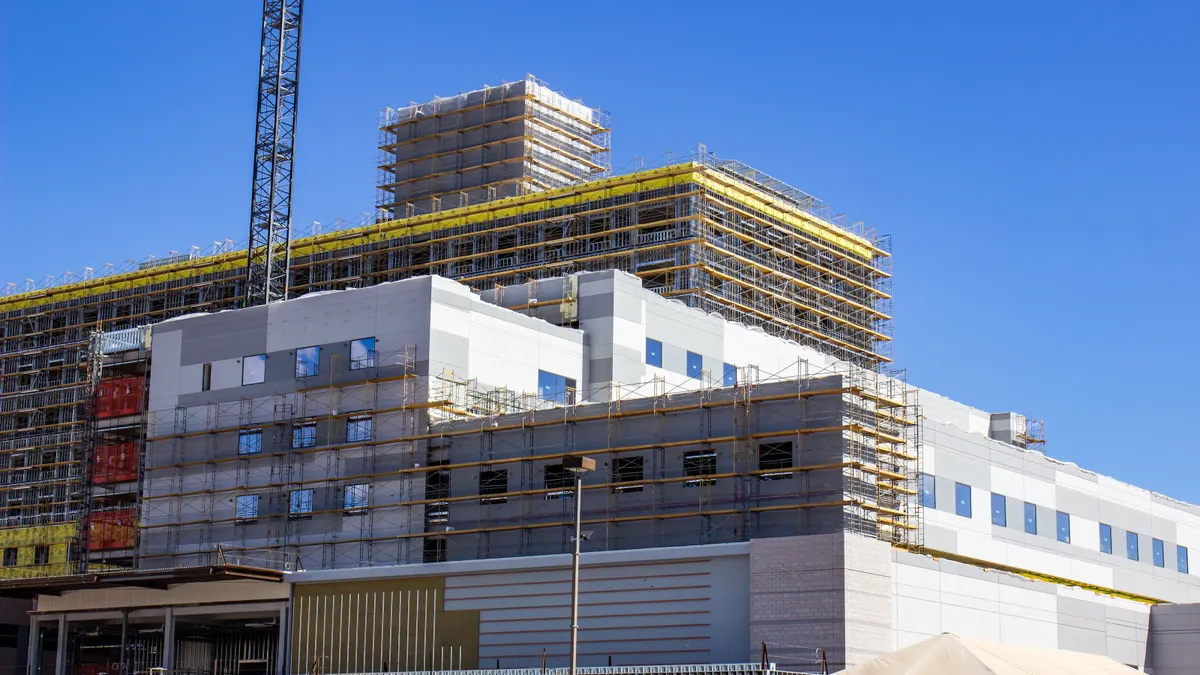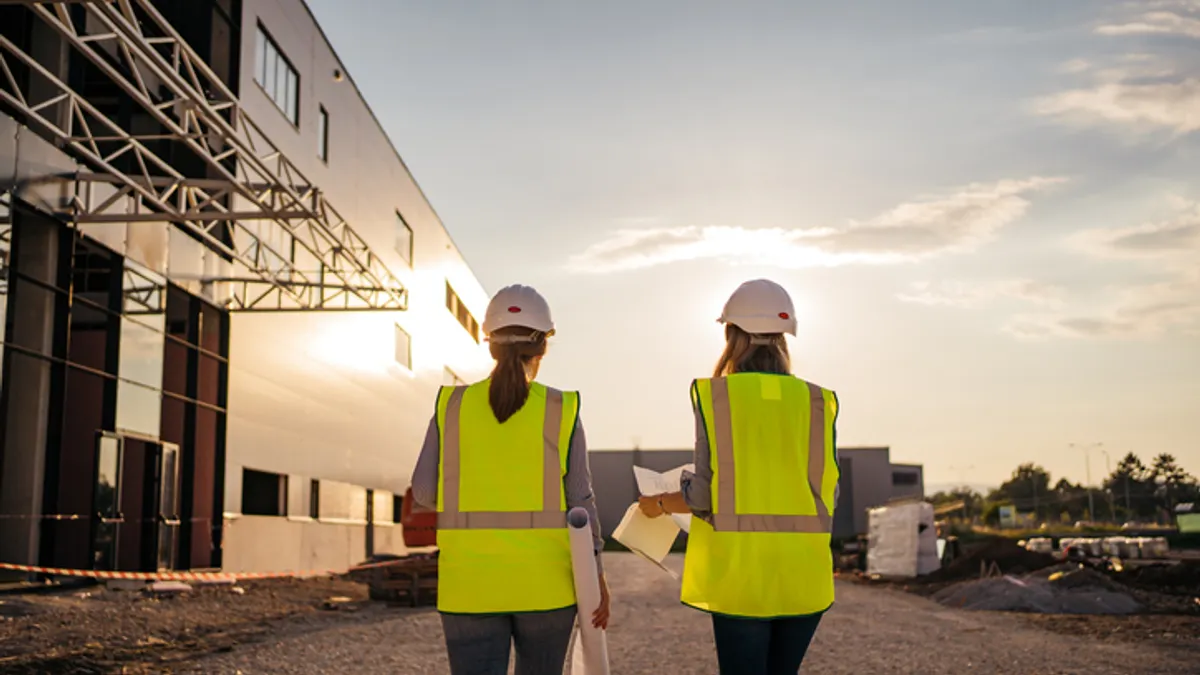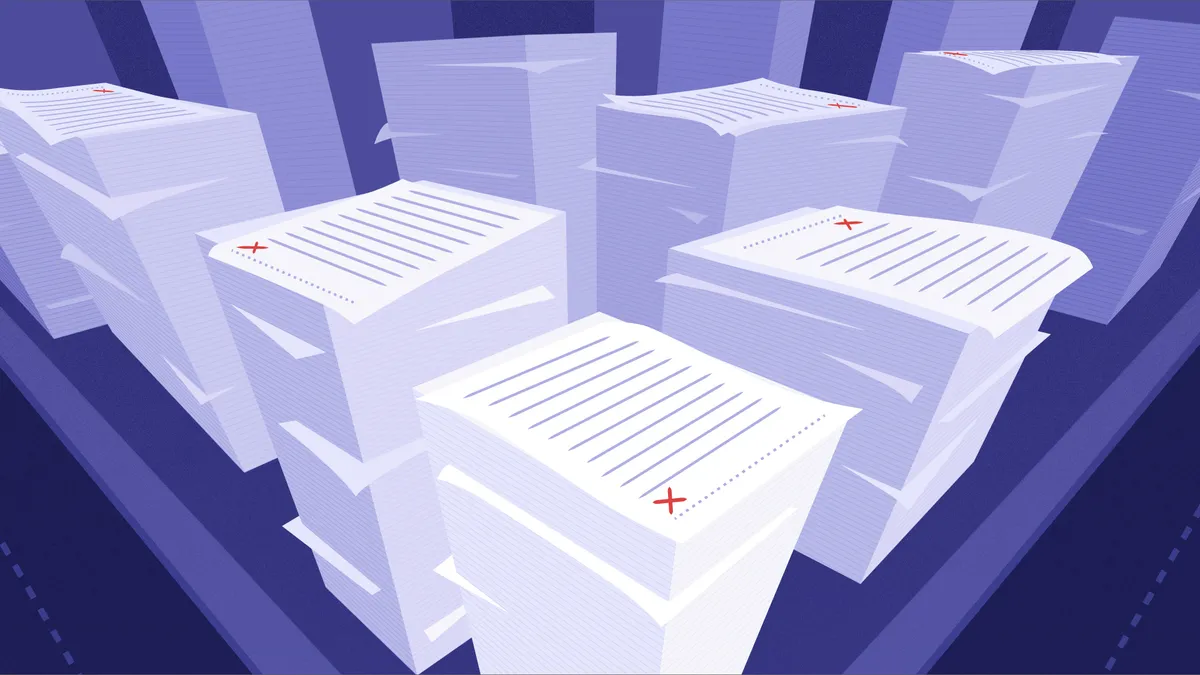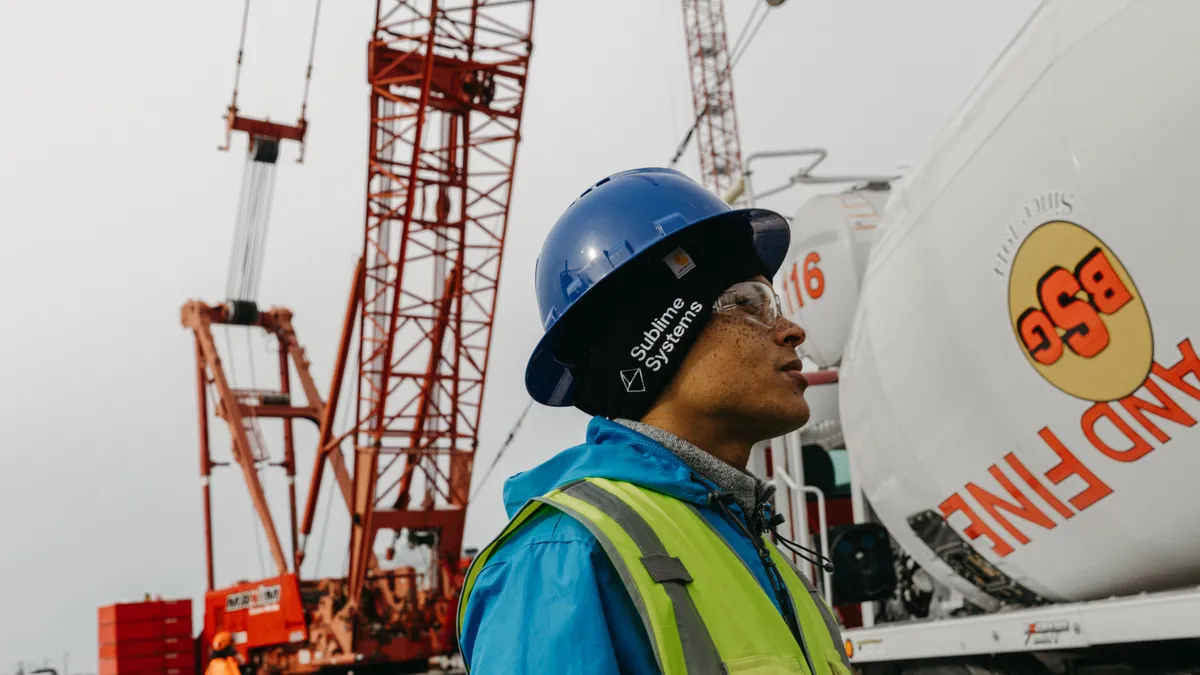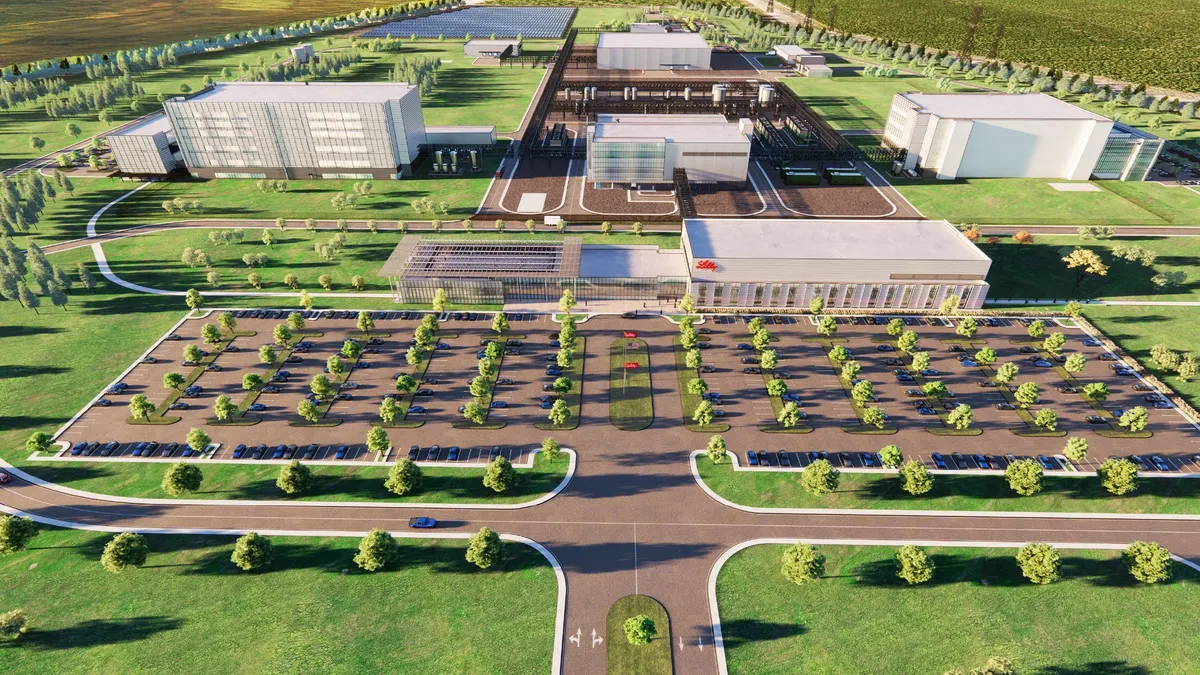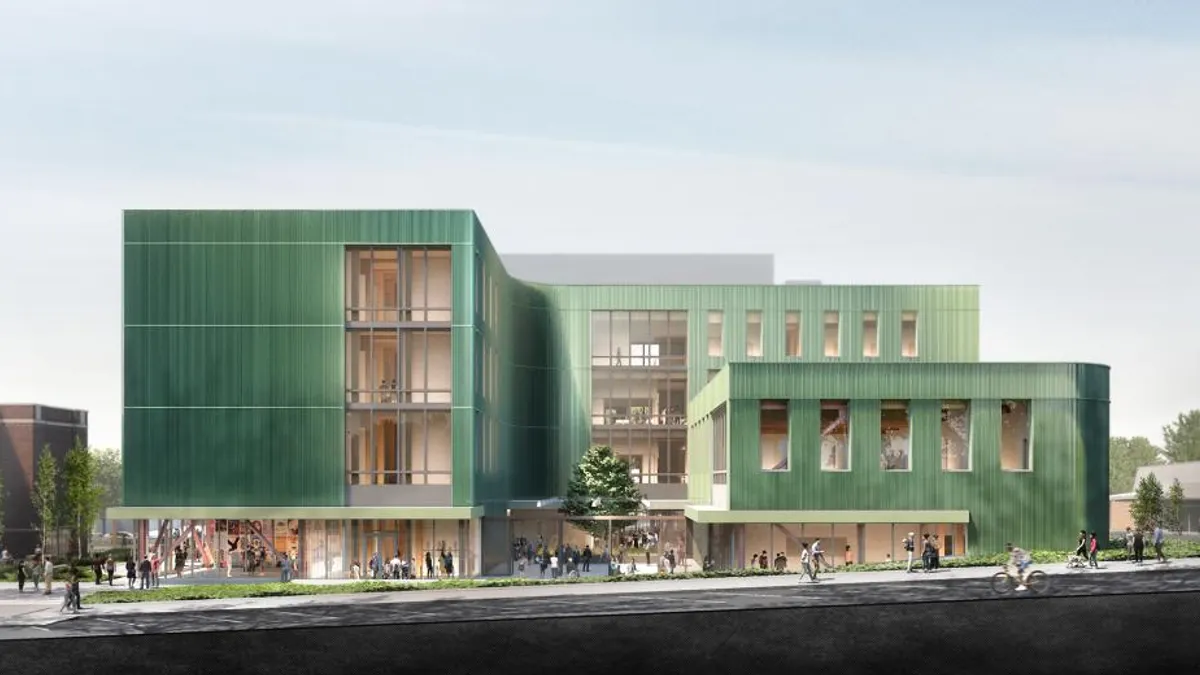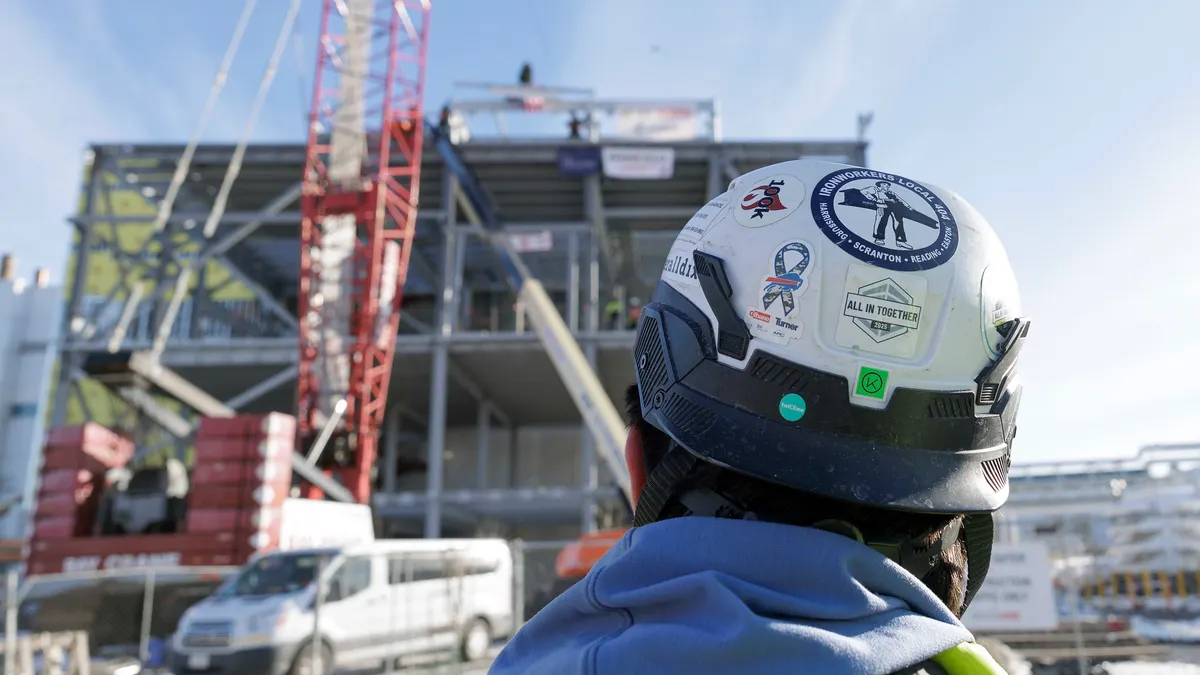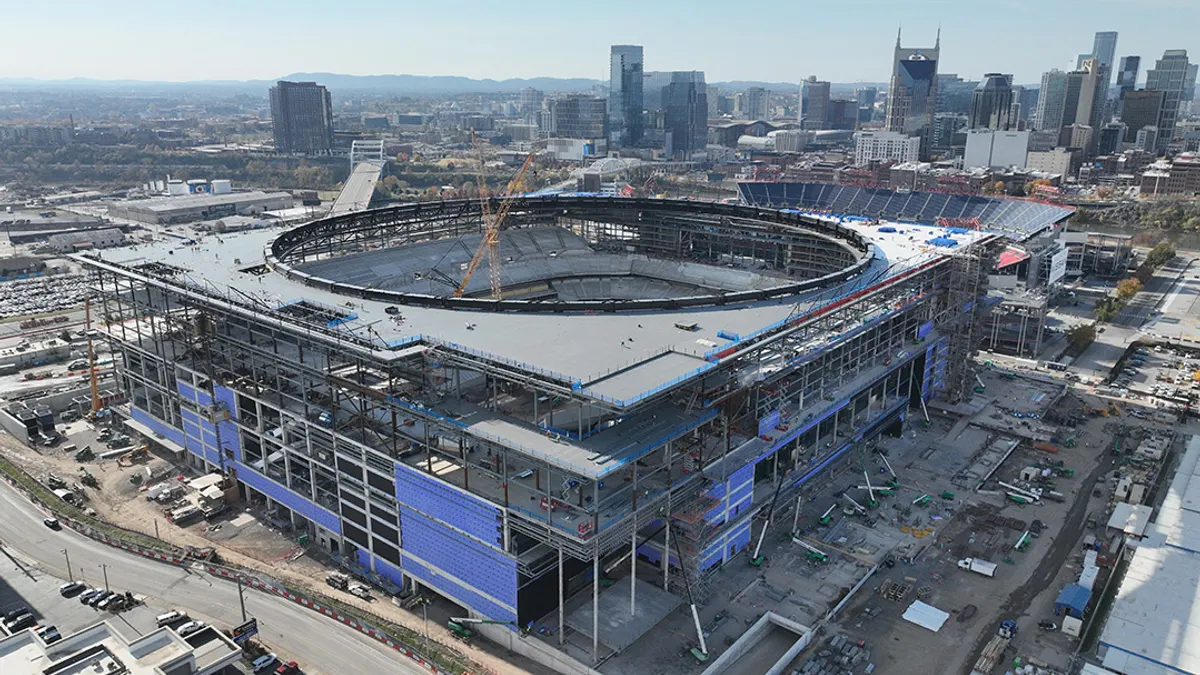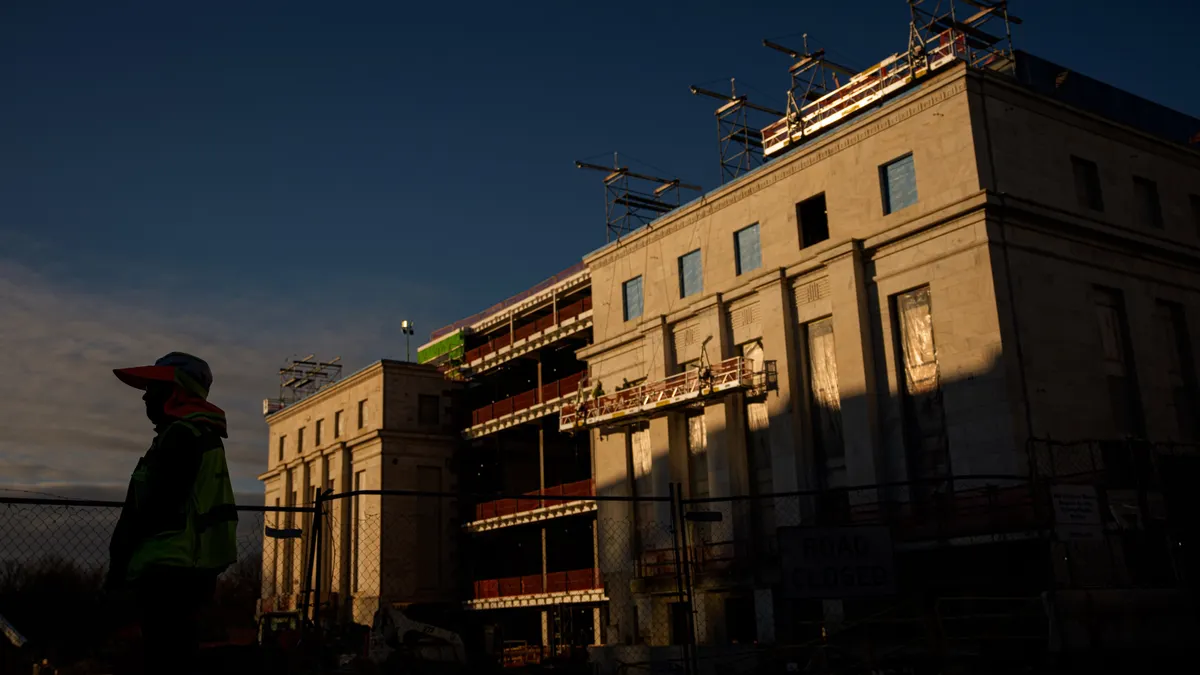As planning ticks up around healthcare projects, a Minneapolis-based general contractor is turning to a 20-year veteran to lead its construction push.
Ryan Cos., a Minneapolis-based construction firm, recently promoted Nick Kaminski to vice president of healthcare construction. With more than 20 years experience at the company, he will now oversee the firm’s work in the sector across its nationwide portfolio. Kaminski previously served as the firm’s director of construction, according to his LinkedIn profile.
The move aims to tighten coordination between regional teams and strengthen relationships with healthcare clients. Kaminski also will play a key role in the mentorship of younger staff, according to the release.
Here, Kaminski talks with Construction Dive about his new priorities, technology investments and how macroeconomic pressures are reshaping healthcare construction activity.
This interview has been edited for brevity and clarity.
CONSTRUCTION DIVE: What trends are you seeing in healthcare construction?
NICK KAMINSKI: Health systems continue to develop and implement strategic growth plans, with a strong focus on oncology, cardiovascular and orthopedic care.

As part of this effort, many are prioritizing specialty assets like ambulatory surgery centers and freestanding emergency departments as key elements of their broader ambulatory expansion strategies. These facility types are attracting targeted investments in both new construction and campus expansions nationwide.
At the same time, like many industries, healthcare construction is experiencing labor shortages, especially in areas with rapid population growth or where large, mission-critical projects place heavy demands on the workforce. This complicates scheduling and resource planning.
Therefore, we are placing more focus on matching project timelines with local labor conditions. This involves more proactive collaboration with trade partners, earlier discussions about procurement and sometimes adjusting schedules to maintain quality and consistency while meeting our clients' deadlines.
How are macroeconomic factors, such as materials costs, tariffs and interest rates, affecting your approach to healthcare construction?
Similar to the pandemic years, these factors require a more proactive and disciplined management approach early in the project lifecycle to effectively mitigate risk.
Even when the impacts of things like tariffs seem uncertain or hard to predict, they prompt our teams to engage in critical conversations sooner, adopt a more strategic approach to pricing and commit two to three times more effort to procurement planning and implementation. That said, the waters remain relatively calm for now.
I’m lucky to work with dedicated procurement and supply chain teams who monitor these dynamics daily. Their insights give our preconstruction and field teams the real-time intelligence needed to navigate changing conditions alongside our clients, helping to keep projects moving forward with confidence.
Can you go into which construction technologies you are looking into to improve performance across your healthcare projects?
Innovation in healthcare construction is about more than adopting new tools, it's about using technology to drive smarter decisions and better outcomes for our clients. At Ryan, we’re leveraging two newer platforms, Join and Destini, to do just that.
Join is a collaborative, web-based decision-making platform that brings transparency to the preconstruction process. It allows our teams and our clients to evaluate design options, understand cost and schedule impacts in real time and make informed decisions with confidence.
Destini is a data-driven estimating tool that improves the speed and accuracy of our cost modeling.
By drawing on historical data and real-time inputs, we can provide highly detailed estimates that align with project goals and budgets from day one.
Any other aspects of healthcare projects we should highlight?
Once a healthcare project receives approval for funding, moving quickly to market remains a top priority.
Health systems are accelerating efforts to launch projects, making early involvement with trusted construction partners essential. We’re being engaged sooner than ever to advise on decision-making timelines, forecast capital expenditure and develop strategies to control cost risks, especially with aggressive design and construction schedules.
Another key trend is the growing focus on patient-centered planning. Health systems are increasingly making decisions that improve the patient experience, and this focus influences everything from design to construction.
For builders, this means assembling teams that not only achieve technical excellence but also lead with a mindset that values safety, empathy and sensitivity to the environments we work in, especially when work occurs on active campuses.



